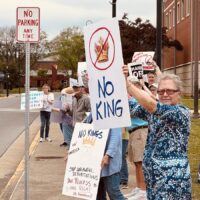Only one African American appears in “The Origins of Country Music,” the last painting of Thomas Hart Benton, which graces the Country Music Hall of Fame and Museum in Nashville. But African influences were a lot more important to the beginnings of the genre, according to the first episode of “Country Music,” the eight-part, 16-hour Ken Burns docuseries.

“It’s probably white man’s soul music,” says Kris Kristofferson, followed immediately by Charley Pride, one of the very few African Americans in the genre, who says “You can find a country song to fit any mood you’re in.” Bill C. Malone, country music’s leading historian, says “You can’t conceive of this music existing without the African American infusion.”
The show notes that the audience for country was “predominantly white, working-class Southerners,” which black and country recording pioneer Ralph Peer called “hill country music,” and then “hillbilly music,” which didn’t set well with some. The adjective “is almost like a racist remark,” Dolly Parton says.
- SUBSCRIBE: Sign up for Hoptown Chronicle’s newsletters
That suggests common ground; scriptwriter Dayton Duncan says the music met “the need of Americans, especially those who felt left out and looked down upon, to tell their stories.”
The first episode is titled “The Rub.” When the genre formed in the 1920s, segregation was enforced, except in music, and “The rub is people mixing,” black fiddle and banjo player and singer Rhiannon Giddens says.
You may know Jimmie Rodgers was influenced by blacks with whom he worked on railroads in Mississippi, but did you know that Rodgers recorded with Louis Armstrong? That DeFord Bailey, son of a slave, and Dave Macon, son of a Confederate soldier, were the first stars of the Grand Ole Opry, and that Bailey played the first tune the night the Opry was named? And that A.P. Carter, who couldn’t remember melodies, rode the ridges to find songs with black guitarist Lesley Riddle, who could?
“It’s about those things we believe in but we can’t see — dreams,” says Merle Haggard, who died not long after he was interviewed. And the old songs brought from England, Scotland and Ireland were also an early form of rural journalism; Parton says her mother told her that songs were once how people learned the news.
One thread that runs through the series is the role of the Carters, whose extended family came to include Johnny Cash; in the first episode, Maybelle Carter is given credit for popularizing the guitar style in which the thumb plays the bass or rhythm line; her granddaughter and step-granddaughter, Carlene Carter and Roseanne Cash, reminisce and even sing along with recordings of their ancestors. Magic moments.
Watch, listen & explore this history of country music
Watch
Full episodes can be streamed on PBS.org, your local station website, via the PBS Video app and Amazon Prime Video. Trailers of each episode and video extras also are available online.
Listen
A Spotify playlist featuring the iconic songs featured in the film takes the audience on an “audiovisual journey.”
Explore
The film’s website also features an interactive look at the roots of country music, a collection of photographs from “Country Music,” and resources for the classroom.
The Rural Blog is a publication of the Institute for Rural Journalism and Community Issues based at the University of Kentucky.






